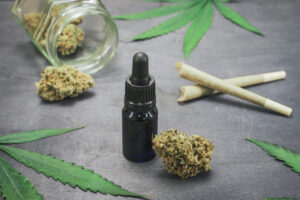If you’re curious about how traditional healing practices can enhance your well-being, Thailand is a fantastic place to explore. Known for its rich culture, Thailand offers various alternative medicine practices that blend ancient wisdom with natural remedies. From herbal treatments to meditation and massage, these methods aim to restore balance and promote health. In this article, we’ll take a closer look at the different aspects of alternative medicine in Thailand and how you can incorporate them into your life.
Key Takeaways
- Traditional Thai wellness emphasizes balance between body, mind, and spirit.
- Thai massage is unique, using no oils and focusing on energy lines for relaxation.
- Herbal medicine in Thailand uses common herbs like ginger and turmeric for health benefits.
- Meditation is deeply rooted in Thai culture, promoting mindfulness and emotional balance.
- Incorporating Thai practices into daily life can enhance overall well-being.
The Healthy Thai Tradition
Understanding Balance in Thai Wellness
Thai wellness is all about balance. It’s not just about physical health; it’s about finding harmony between your body, mind, and spirit. This holistic approach is central to traditional Thai practices. Think of it like a three-legged stool – if one leg is off, the whole thing is unstable. In Thai wellness, if your mind is stressed, it affects your body, and vice versa. They really focus on keeping everything in sync.
Influence of Buddhism on Healing Practices
Buddhism has a huge impact on Thai healing. Concepts like mindfulness and compassion are woven into many practices. Meditation, for example, isn’t just a relaxation technique; it’s a way to cultivate inner peace and understanding, which then radiates outward to improve your overall well-being. The focus on karma and intention also plays a role – the idea that your actions have consequences, and that cultivating positive intentions can lead to better health and happiness. It’s a very interconnected view of health.
Natural Remedies and Mindfulness Techniques
Thai wellness relies heavily on natural remedies. Herbs are used for everything from easing aches and pains to boosting immunity. And it’s not just about taking a pill; it’s about incorporating these herbs into your daily life through food, teas, and balms. Mindfulness techniques, like focused breathing and body scans, are also key. These practices help you become more aware of your body and mind, allowing you to identify and address imbalances before they become serious problems. It’s a proactive approach to health that emphasizes self-awareness and natural solutions. Yangsheng promotes health through similar self-cultivation practices.
Thai wellness isn’t just a set of treatments; it’s a way of life. It’s about cultivating balance, mindfulness, and compassion in everything you do. It’s about recognizing the interconnectedness of your body, mind, and spirit, and taking steps to nurture all three.
Traditional Thai Massage Techniques

Traditional Thai Massage, or Nuad Thai, is a big deal in Thailand. It’s been around for ages, and it’s way more than just a relaxing rubdown. It’s a whole system of healing. I remember the first time I tried it, I was expecting something like a Swedish massage, but it was totally different!
History and Origins of Nuad Thai
Nuad Thai has a super long history, going back over 2,500 years. It started with Buddhist monks who used it to keep their bodies healthy and flexible during long meditation sessions. It’s influenced by Indian Ayurvedic medicine, which is all about balancing energy in the body. So, it’s not just about muscles; it’s about energy flow too. Learning the foundation of Thai Massage is key to understanding its benefits.
Benefits of Thai Massage
Thai massage is good for you in a bunch of ways. It can reduce muscle pain, improve flexibility, boost circulation, and lower stress. It also helps balance your energy, bringing a sense of peace and well-being. I always feel so much lighter and more relaxed after a session. It’s like my body is saying, "Thank you!"
Here’s a quick rundown of some key benefits:
- Reduces muscle tension
- Increases flexibility
- Improves circulation
- Reduces stress and anxiety
- Balances energy flow
Thai massage is more than just a physical treatment; it’s a holistic practice that addresses the mind, body, and spirit. It’s about restoring balance and harmony within yourself.
Differences from Western Massage Styles
Thai massage is pretty different from what most people think of when they hear "massage." For one thing, you stay fully clothed. No oils are used, and the therapist uses their hands, elbows, knees, and feet to stretch and press on your body. It’s often described as assisted yoga because the therapist moves you into different positions. Western massage styles, like Swedish massage, tend to focus more on kneading muscles and using oils. It’s a different vibe altogether. If you’re looking for something that’s more active and involves stretching, Thai massage might be right up your alley. It’s a unique experience that’s worth trying at least once!
Exploring Thai Herbal Medicine
Thai herbal medicine is a fascinating blend of knowledge, drawing from Ayurveda, Chinese medicine, and ancient Thai traditions. It’s all about balancing the body’s energies to keep you healthy and prevent sickness. This knowledge has been passed down through generations, and it’s still a vital part of Thai culture today. Let’s explore Thai massage and how it is used globally.
Common Herbs and Their Uses
Thai herbal medicine uses a variety of herbs, each with unique healing properties. These herbs are often used in teas, balms, and poultices to treat various ailments. Here are a few common examples:
- Ginger: Known for boosting immunity, easing pain, and improving digestion.
- Turmeric: A powerful anti-inflammatory.
- Lemongrass: Used for detoxification.
- Holy Basil: Helps relieve stress.
Thai herbs are not just about physical healing; they also support mental well-being. Many herbs are believed to have calming and mood-boosting effects, making them a holistic approach to health.
Preparation of Herbal Remedies
Preparing herbal remedies in Thailand is often a traditional process. It can involve:
- Infusing herbs in hot water to make teas.
- Grinding herbs into powders for capsules or topical applications.
- Steaming herbs to release their essential oils for inhalation or compresses.
Integrating Herbs into Daily Life
It’s surprisingly easy to incorporate Thai herbs into your daily routine. You can:
- Add fresh herbs to your cooking for flavor and health benefits.
- Drink herbal teas throughout the day.
- Use herbal balms for muscle aches and pains.
- Consider using a Thai inhaler, or “Ya dom”
Meditation and Mindfulness in Thailand
Thailand’s approach to wellness is deeply intertwined with meditation and mindfulness, largely influenced by Buddhist principles. For ages, these practices have been a cornerstone of Thai culture, promoting mental clarity and emotional well-being. You’ll find people engaging in these techniques everywhere, from bustling temples to the quiet of their homes.
Types of Meditation Practices
There are several types of meditation you might encounter in Thailand. One common one is mindfulness meditation, where the goal is to stay present in the moment, observing thoughts and feelings without judgment. Another popular method is breath awareness, which involves focusing on each breath to quiet the mind. Loving-kindness meditation (Metta) is also widely practiced, where you cultivate feelings of warmth and compassion towards yourself and others.
Benefits of Mindfulness
Mindfulness offers a range of benefits that extend beyond just feeling calm. Regular practice can lead to reduced stress levels, improved focus, and increased self-awareness. It can also help you develop a greater sense of emotional balance, making it easier to navigate life’s challenges. It’s not a quick fix, but a gradual process of cultivating inner peace.
Meditation in Daily Life
Integrating meditation into daily life doesn’t have to be complicated. Even a few minutes each day can make a difference. You could start by setting aside time each morning or evening for a short meditation session. You can also practice mindfulness throughout the day by paying attention to your senses and surroundings. For example, focus on the taste of your food, the feeling of the sun on your skin, or the sounds around you. These small moments of awareness can add up to a more mindful and balanced life. If you are interested in spiritual healing, there are many options to explore.
Meditation is not about stopping your thoughts, but about learning to observe them without getting carried away. It’s like watching clouds pass by in the sky – you acknowledge them, but you don’t get lost in them.
The Art of Thai Yoga

Overview of Ruesri Dat Ton
Okay, so Thai Yoga, or Ruesri Dat Ton, is this super old practice. I’m talking ancient! It’s like yoga mixed with traditional Thai healing stuff. Apparently, monks came up with it to stay in shape, get flexible, and keep their energy flowing. It’s all about stretching and breathing to balance your body and mind. I always thought yoga was just yoga, but nope, Thailand has its own version!
Physical and Mental Benefits
So, what’s the big deal with Ruesri Dat Ton? Well, it’s supposed to be good for you, both physically and mentally. Think of it as a way to stretch out those energy lines in your body. It can help you get more flexible, make your joints feel better, and release tension. Plus, it’s supposed to let your energy flow freely. I guess that means less stress and more good vibes. I could definitely use some of that!
Here’s a quick rundown of potential benefits:
- Increased flexibility
- Improved joint health
- Stress reduction
- Better energy flow
Incorporating Yoga into Wellness Routines
Alright, so how do you actually do this Ruesri Dat Ton thing? Well, you can find classes or videos online. It’s all about learning the right stretches and postures. The cool thing is, you can add it to your regular workout or just do it on its own. Even a few minutes a day can make a difference. I’m thinking of trying it out myself. Maybe I’ll finally be able to touch my toes! If you are looking for Thai massage to relax your muscles, this could be a great alternative.
It’s important to remember that Ruesri Dat Ton is more than just exercise. It’s a practice rooted in Thai culture and tradition. So, when you’re doing it, try to be mindful and respectful of its origins. That way, you’ll get the most out of it, both physically and mentally.
Culinary Healing: Thai Cooking for Wellness
Thai cuisine is more than just delicious; it’s a pathway to wellness! It’s all about using fresh, natural ingredients and packing dishes with herbs and spices that have actual healing properties. The way Thai food balances sweet, salty, sour, and spicy flavors isn’t just for taste – it’s thought to help with digestion, boost your immune system, and even detoxify your body. I’ve been trying to incorporate more Thai-inspired meals into my week, and I’m already feeling the difference.
Healing Properties of Thai Ingredients
Thai cooking is like a natural pharmacy. Think about it: ginger, lemongrass, turmeric, galangal – these aren’t just flavor enhancers; they’re powerhouses of health benefits. Basil, coriander, and mint are also frequently used, aiding in digestion and offering anti-inflammatory effects. It’s amazing how much good stuff is packed into each dish. I’ve started growing some of these herbs in my garden so I can always have them fresh.
Preparation of Herbal Remedies
It’s not just what you eat, but how you prepare it. The way Thai cooks use herbs and spices is key to unlocking their benefits. For example, bruising lemongrass releases its oils, and gently cooking turmeric preserves its compounds. I’ve been experimenting with different methods, like making my own curry pastes from scratch, and it’s been a fun learning experience. You can even try warm baths infused with herbs.
Integrating Herbs into Daily Life
Here are some simple ways to bring the healing power of Thai herbs into your everyday meals:
- Add fresh basil or mint to your salads.
- Make a ginger and lemongrass tea.
- Use turmeric in your stir-fries or soups.
- Incorporate coconut milk for a creamy, healthy base.
It’s about making small, consistent choices that add up over time. You don’t need to overhaul your entire diet; just start by adding a few key ingredients and see how you feel. I’ve found that even a little bit of mindful cooking can make a big difference in my overall well-being.
Thai cooking focuses on balance, which is a key part of the holistic wellness approach found in traditional Thai practices.
Integrating Traditional Practices into Modern Life
It’s one thing to learn about these amazing Thai traditions, but how do we actually fit them into our busy lives? It’s easier than you think! It’s not about completely changing everything, but more about adding small, mindful practices to your daily routine.
Creating a Daily Wellness Routine
Start small and build from there. Don’t try to overhaul your entire life overnight. Pick one or two practices that resonate with you and focus on incorporating them consistently. For example:
- Morning meditation: Even 5-10 minutes can make a difference.
- Herbal tea: Swap your usual coffee for a cup of ginger or lemongrass tea.
- Stretching: Incorporate a few Ruesri Dat Ton poses into your morning routine.
Consistency is key. Find a time that works for you and stick to it as much as possible. Think of it as a non-negotiable appointment with yourself. You can also explore food production technology to create food as medicine solutions.
Mindful Living Tips
Mindfulness isn’t just about meditation; it’s about bringing awareness to everything you do. Here are a few ways to cultivate mindfulness throughout your day:
- Eat mindfully: Pay attention to the flavors, textures, and aromas of your food.
- Walk mindfully: Notice the sensations in your body as you move.
- Listen mindfully: Give your full attention to the person speaking.
By being present in the moment, you can reduce stress and appreciate the simple things in life. It’s about slowing down and savoring each experience, rather than rushing through it. This can be as simple as taking a few deep breaths before starting a task or focusing on the feeling of the sun on your skin.
Respecting Cultural Origins in Practice
These practices are rooted in centuries of tradition and cultural significance. It’s important to approach them with respect and humility.
- Learn about the history and philosophy behind each practice.
- Seek guidance from qualified teachers or practitioners.
- Avoid appropriating or misrepresenting the traditions.
Remember, it’s about honoring the origins of these practices while adapting them to fit your own life. It’s a journey of learning and discovery, and it’s one that can bring lasting benefits to your well-being.
Wrapping Up Your Journey into Thai Healing
So, there you have it! Exploring alternative medicine in Thailand is like stepping into a whole new world of healing. From the soothing touch of Thai massage to the calming effects of meditation, these practices are all about finding balance and wellness. It’s not just about feeling good in the moment; it’s about creating a lifestyle that supports your health in the long run. Whether you’re a seasoned wellness traveler or just curious about trying something new, there’s something in Thai traditional medicine for everyone. So why not give it a shot? You might just find a new favorite way to relax and recharge.
Frequently Asked Questions
What is the main focus of traditional Thai medicine?
Traditional Thai medicine mainly focuses on balancing the body, mind, and spirit to promote overall health and well-being.
How does Thai massage differ from Western massage?
Thai massage involves stretching and pressure along energy lines without using oils, while Western massage typically uses oils and focuses more on relaxation.
What are some common herbs used in Thai herbal medicine?
Common herbs include ginger for digestion, turmeric for inflammation, lemongrass for detox, and holy basil for stress relief.
What types of meditation practices are popular in Thailand?
Popular meditation practices in Thailand include mindfulness meditation, breath awareness, and loving-kindness meditation.
How can I incorporate Thai wellness practices into my daily life?
You can include Thai wellness by practicing mindfulness, using herbs in cooking, and trying Thai yoga stretches regularly.
Why is it important to respect the cultural origins of Thai wellness practices?
Respecting the cultural origins is important because these practices are deeply connected to Buddhist teachings and centuries of tradition.






